Introduction of JCC
Jackson crossed cylinder is a combination of two cylinders of equal strength but of an opposite sign placed with their axis at 90 degrees to each other and mounted in a handle. Also known as the flip cross technique

Principle of Jackson cross cylinder
When light rays passed through an optical system which does not have similar curvature in two principal meridians, it causes rays to focus on two focal points rather than making a single focal point. Similarly, when light passes through an astigmatic eye it causes the formation of two focal points. The distance between two focal points is known as the interval or conoid of the strum. The best image in this type of optical system is somewhere in the middle of the interval of strum where there is an equal amount of convergence from one meridian and an equal amount of divergence from another meridian, known as the circle of least confusion. Which gives a compromised but best possible image produced by this system.
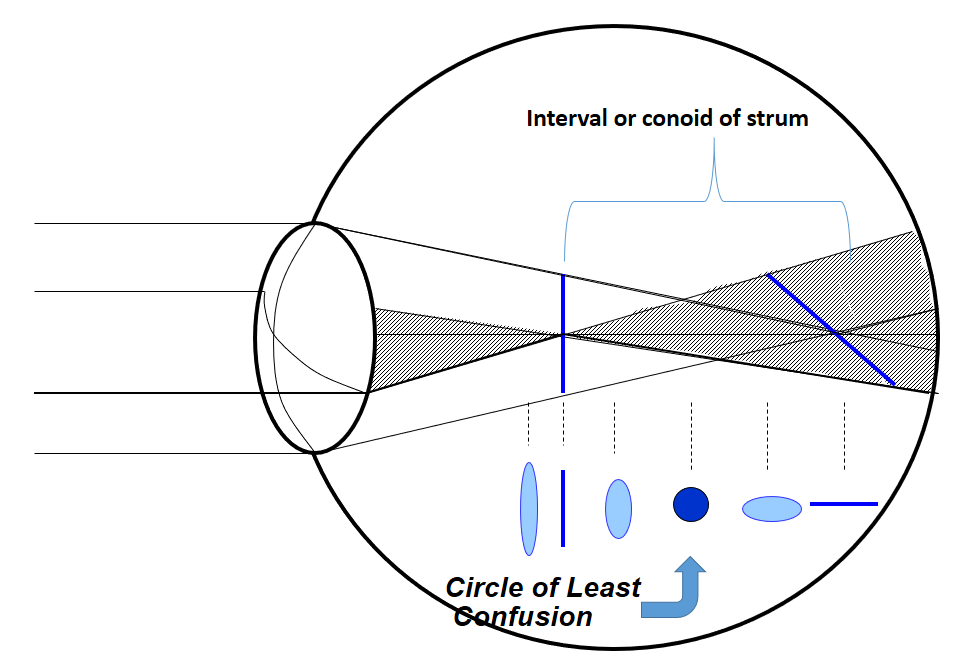
If you take any power Jackson cross cylinder and write it down in the prescription.
0.25 JCC = +0.25DS/-0.50DC X 90
0.50 JCC = +0.50DS/-1.00DC X 90
1.00 JCC = +1.00DS/-2.00DC X 90
2.00 JCC = +2.00DS/-4.00DC X 90
And calculate the Spherical equivalent of above mention prescription, it is equal to zero
Having the advantage of spherical equivalent = zero, when JCC is placed in front of an astigmatic patient’s eye. Jackson cross cylinder will not move the circle of least confusion. It either increases or decreases the interval of strum.
Working of Jackson cross cylinder
Suppose the eye is compound myopic astigmatic, with 4 Dioptre cylinders of astigmatism with 1 dioptre of spherical correction.
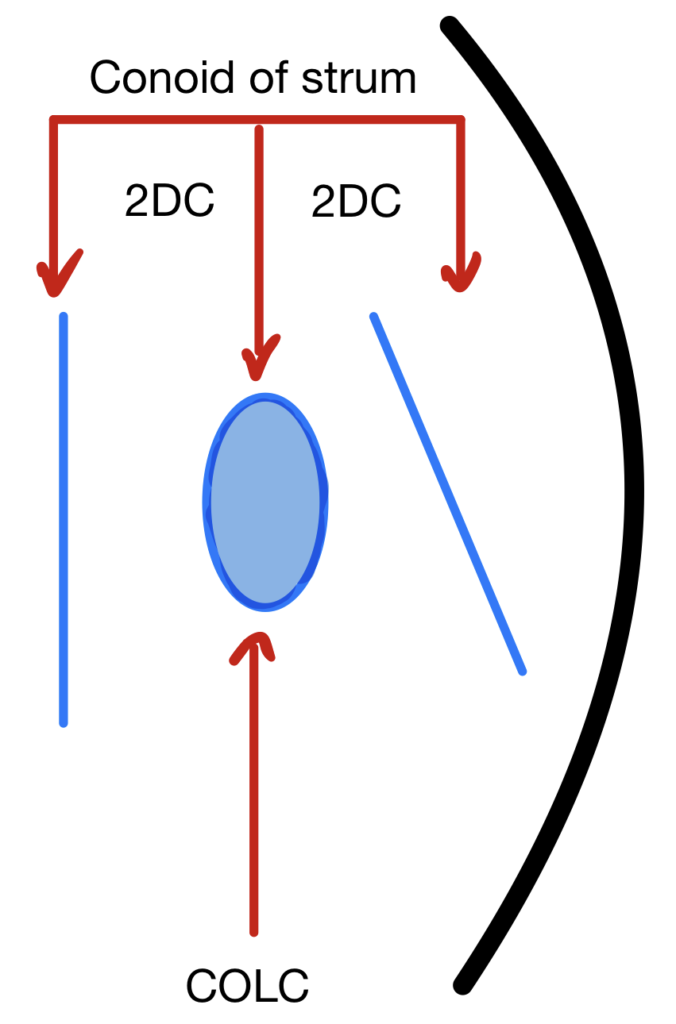
Step 1 is to Use a spherical lens to place circle of lease confusion on the retina. For myopic use minimum minus lens gives the patient maximum visual acuity. For hypermetropia use a maximum plus lens which gives the patient maximum visual acuity (fogging).
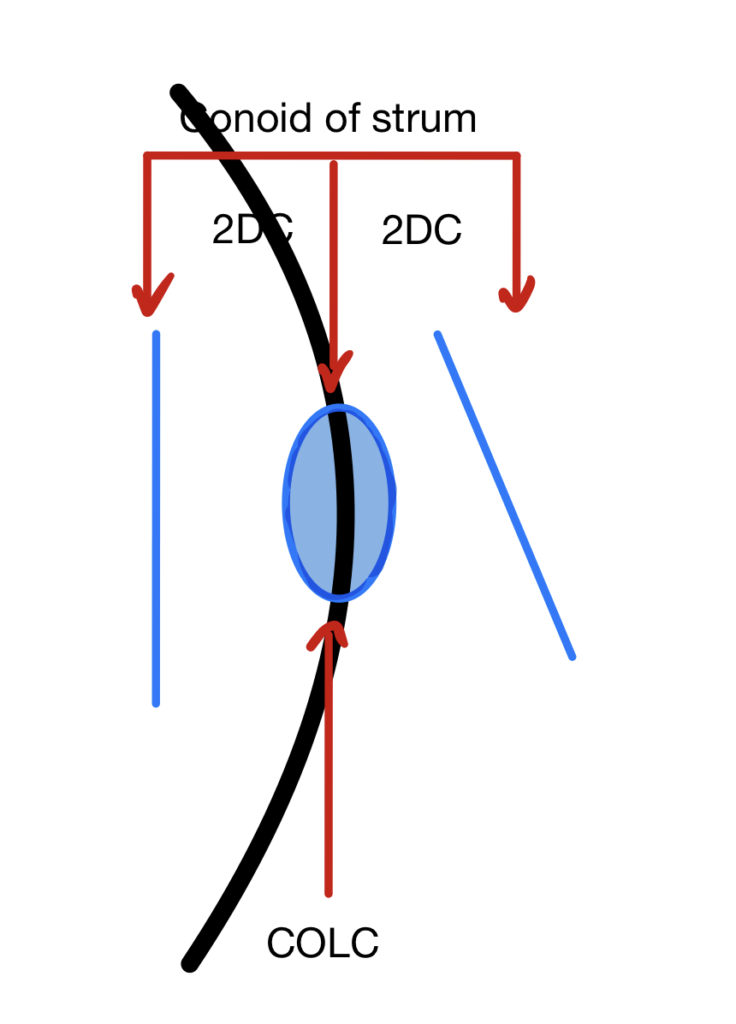
Step 2 Align the Jackson cross cylinder in front of the patient’s eye. Either it is going to increase the interval of strum or decrease it. When the interval of strum increases, the circle of least confusion become larger and the patient report blur. If the interval of strum decreases, the circle of least confusion become smaller and the patient reports clear.
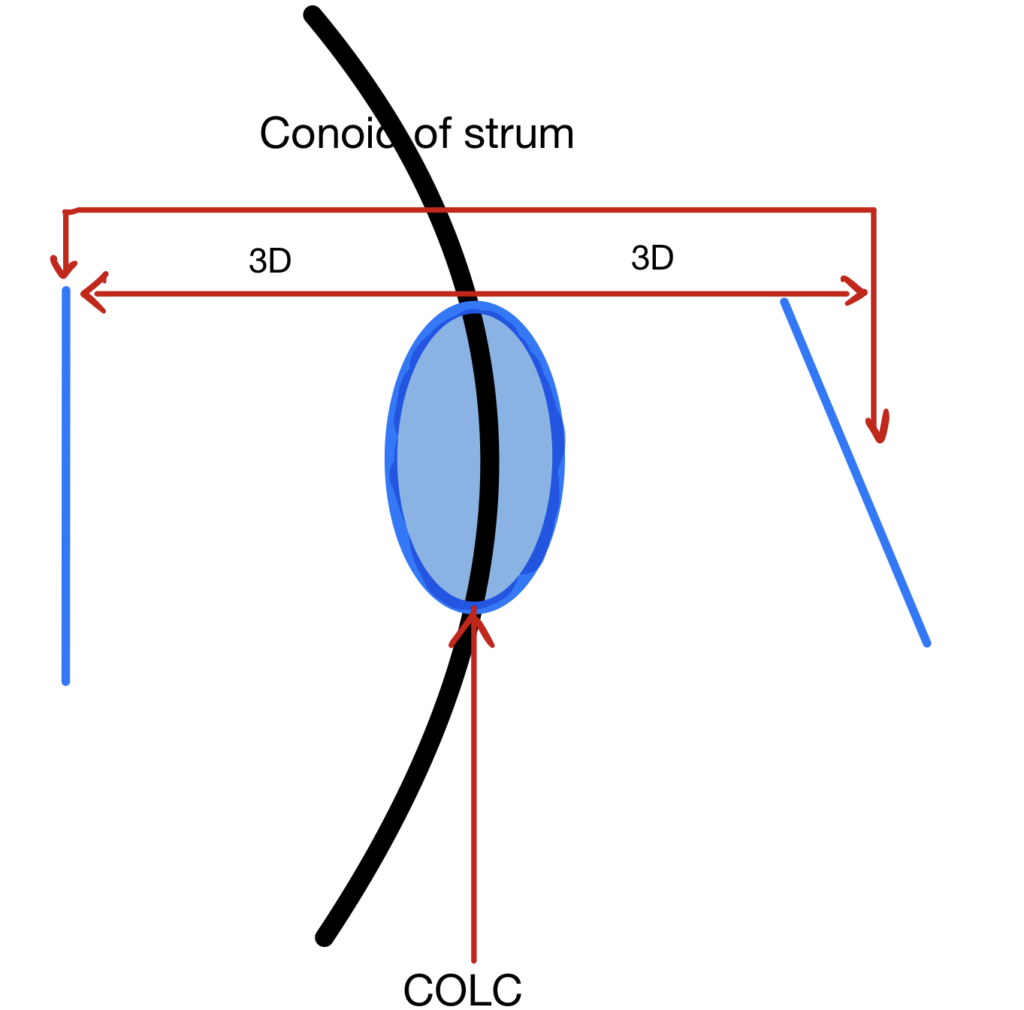
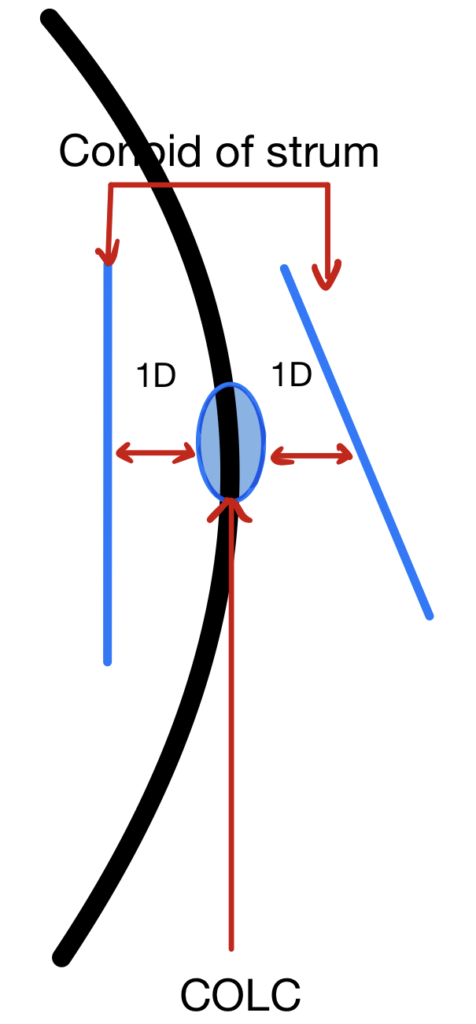
Step 3: Place cylinder power according to which side the patient was choosing in step 2. But when you place the astigmatic lens in front of the patient’s eye. It moves the circle of least confusion away from the retina. For the same reason, we have to add the opposite power half of cylindrical power to spherical power.
For E.g. if you’re placing -1.00 DC in the front patient’s eye. So you have to add +0.50DS to spherical power which was used to bring a circle of lease confusion on the retina in step 1. By adding the opposite half of cylindrical power to spherical will bring the circle of least confusion back on retina
Follow step2 and step 3 till the patient say either both position are clear or blur for him or her.
Procedure of JCC
- Monocular
- Use a spherical lens to place COLC on the retina.
Step 1: Discovery of astigmatism
Place Jackson cross cylinder so that the axis is toward 90 or 180 degrees. Ask the patient which position is clear. Look for the minus axis. If the patient says position 2 where the axis of the minus cylinder was pointing towards 180 degrees. Keep a note of this axis
Place Jackson cross cylinder obliquely now so that the axis is towards 45 and 135 degrees. Ask the patient which position is clear. Look for the minus axis. If the patient says position 2 where the axis of the minus cylinder was pointing towards 135 degrees. Keep a note of this axis
Now place the cylindrical power lens on the trial frame in such a way axis lies mid-way between 180 and 135 i.e 165.
Step 2: Refinement of axis
Remember to refine the patient axis before you refine patient power. The correct axis can be found if the power is wrong, but you can not find the correct power if the axis is wrong.
For refinement of the axis. Place your Jackson cross cylinder such that its handle is parallel to an axis of the cylinder which is placed in the trial frame during the discovery of astigmatism.
Ask the patient which position is clear. If the patient chooses one position over another. Rotate the cylindrical axis toward chosen one. How much to rotate depends on the amount of cylinders. More power of cylinder axis rotation should be minimum i.e. 5 degrees. If less power cylinder, rotation can be 10-20 degrees.
Repeat this until the patient say both positions are a blur for him/her.
Step 3: Refinement of power
For refinement of power place Jackson cross cylinder axis parallel to the axis of the cylindrical lens placed on the trial frame. Ask the patient which position is clear. If the patient prefers plus axis over minus cylindrical power placed in the trial frame, decrease cylindrical power on the trial frame. If the patient prefers minus axis over minus cylindrical power placed in the trial frame, increase cylindrical power on the trial frame. Don’t forget to add half the opposite of cylindrical lens power to the spherical side in the trial frame. Repeat this procedure till the patient report both position blurs.
For more information about Jackson cross cylinder. Please visit our YouTube channel.
Lecturer (Nethradhama School of Optometry)
Moptom
